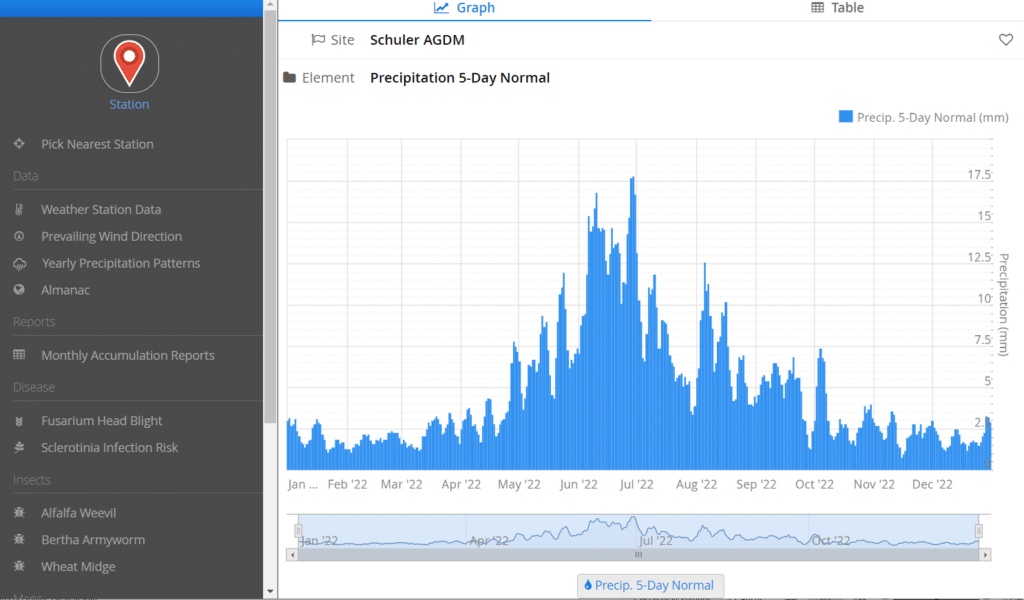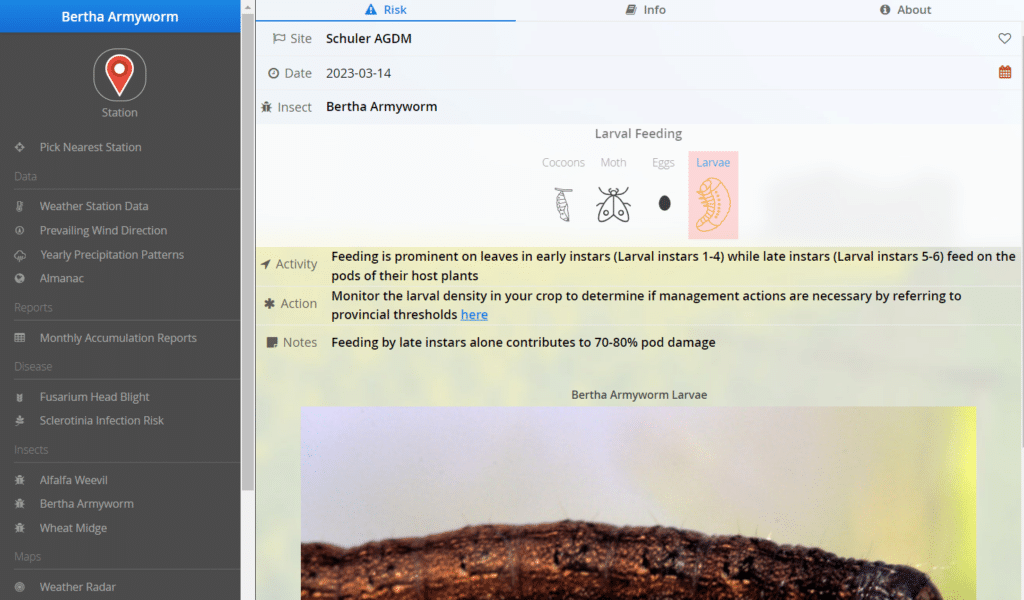Key Result
A website featuring an Alberta weather-based near real-time crop insect-pest monitoring and prediction model provides growers and industry members with information on the risk/threat, life cycle, outbreak cycles and more in their area on bertha armyworm, wheat midge and alfalfa weevil.
Project Summary
Purpose and objectives
Current insect management strategies tend to be more reactionary (response to damage) than proactive. A regional/Alberta-wide forecasting, monitoring and information delivery system is needed to integrate pest field survey data with major biophysical factors influencing the development, growth rates, abundance as well as the spatial extent of infestation of the target pests. This would be beneficial for both the environment and for Alberta growers in their insect management efforts.
This project aim to develop and implement a provincial weather-based monitoring/prediction model for three economically significant insect pests in Alberta: bertha armyworm, wheat midge and alfalfa weevil. The model will use near real time (NRT) weather data from around 350 stations and provincial pest survey data. Considering significant interest from producers on flea beetle dynamics and prediction, the project expanded to include striped flea beetle and crucifer flea beetle. The models will assist in timely and informed decision making for effective pest management.
Methodology
The project was extended for a year with funding to collect additional field data on wheat midge, alfalfa weevil and canola flea beetles. Phenology and life history of the three pests and their natural enemies along with crop phenology were monitored across 17 sites in Alberta. Weather monitoring occurred at all sites. Spring soil sampling, yellow-sticky trap monitoring and wheat head dissections were conducted for wheat midge. Alfalfa weevil adults and larval populations were monitored in forage and seed crops. Canola flea beetles were monitored using yellow-sticky traps from seeding to pod maturity at seven sites. Weekly weather-based prediction maps were produced for each species. Field data quality control and data analyses across sites and years was carried out to improve phenology models for each species.
Outcomes
The results of the models for the three pests and their natural enemies have been integrated and coded to create the AB-WIPP (Alberta Weather-based Insect Pest Prediction) mobile-friendly web pages available at the Alberta Climate Information Services (ACIS) website. Producers, entomologists, and agriculture field people will be sought after for feedback and validation on model and web application.
By accessing the website (weatherdata.ca/), growers and industry people can easily discover information on the risk/threat, life cycle, outbreak cycles and more in their area on Bertha Armyworm, Wheat Midge and Alfalfa Weevil.







